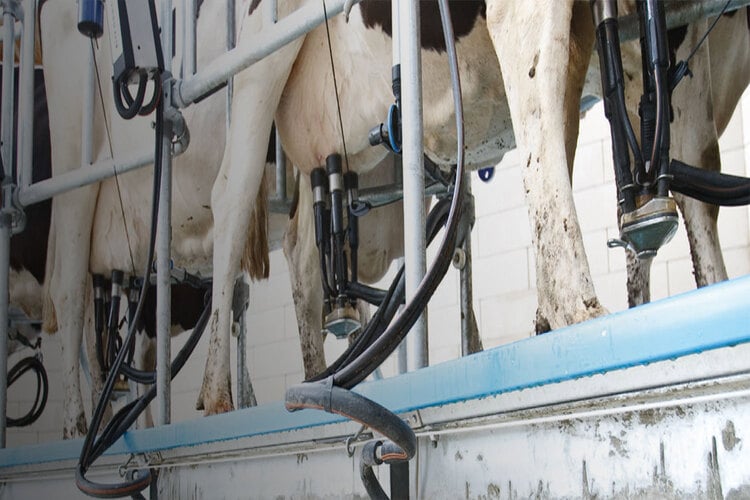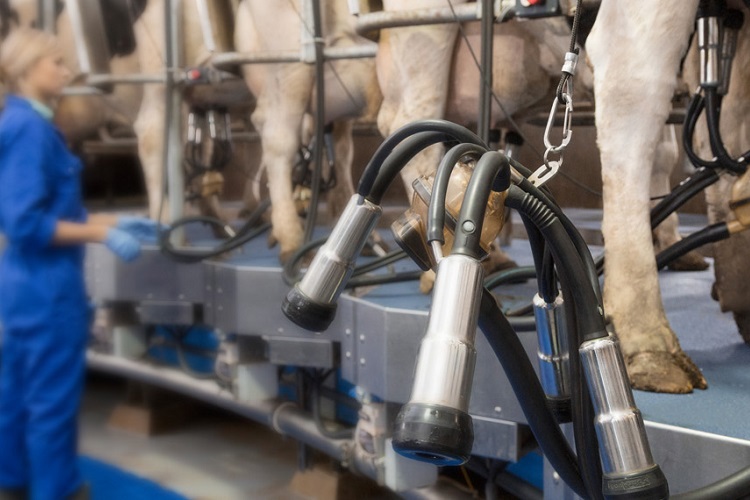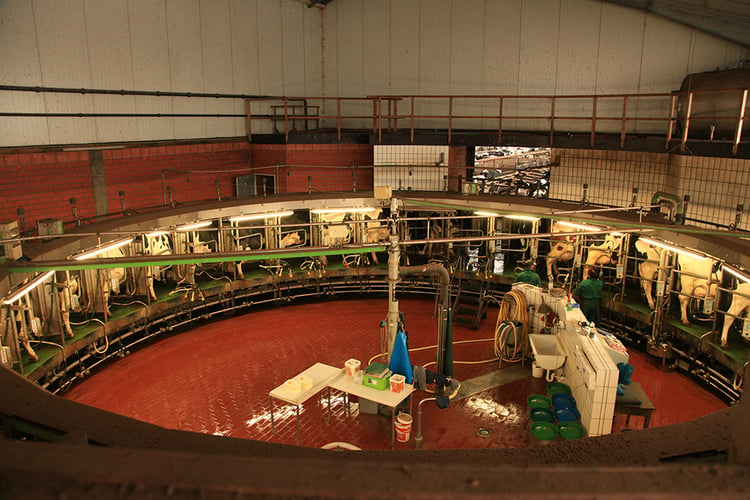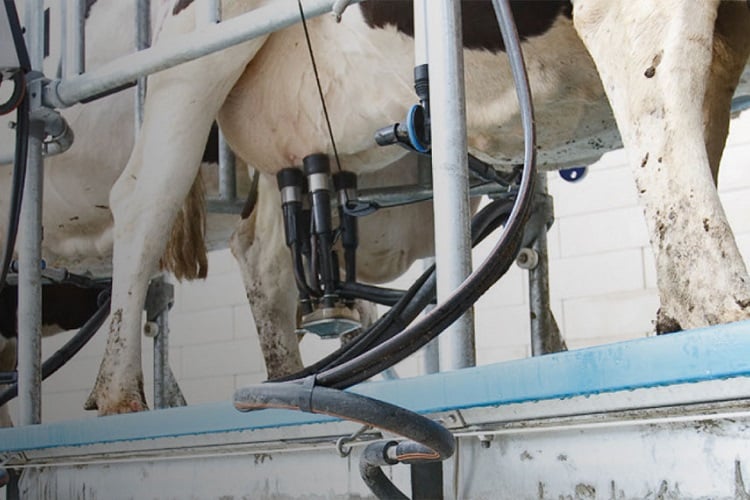- LifeStart
- Lifetime production
Key takeaways from the research:
-
A LifeStart feeding schedule resulted in a higher average daily gain until day 63.
-
A LifeStart feeding schedule did not result in a significantly higher production during the first lactation, but the culling rate during the first lactation was reduced.
-
Calves fed a LifeStart feeding schedule had a significantly higher production during the second lactation.

Elevated planes of nutrition have a positive impact on performance from birth to lactation
Many authors have shown that high levels of feeding in the early phase of life of a calf have a positive effect on growth and production during the first lactation[1,2,3,4,5,6,7,8]. Soberon et al[9]. have demonstrated that this effect carries over to the 2nd lactation as well. The purpose of a retrospective study by Dr. Ariane Bolt[10] was to investigate the effect of a high plane of early-life nutrition on first and subsequent lactations.
Study design
During the first part of the study, a group of 2,259 calves fed according to a restricted feeding schedule was compared to a group of 1,435 calves fed an intensive feeding schedule. Both groups were weaned at 63 days of life. The calves on an intensive feeding schedule consumed an average of 403 litres of CMR compared to 308 litres for the restricted feeding group.
Growth and fertility
Significant differences in average daily gain up to day 63 were found between the groups and the calves fed the intensive feeding schedule was weighed 92.2 kg vs. the calves fed a restricted feeding schedule weighing 78.8 kg (p<0.0001). After day 91, the differences were no longer significant.
The age at first insemination was lower in the calves fed the intensive feeding schedule (15.0 vs. 15.3 months), they required fewer inseminations (1.7 vs. 2.1) and calved earlier (24.8 months vs. 25.5 months) but none of these differences was significant.
Milk production and culling rate
A slightly higher energy corrected milk yield in the first lactation was found in the group fed intensively compared to the group fed according to a restricted schedule. This difference was not statistically significant, however.
The culling rate during the 1st lactation was 7.1% in the group fed intensively vs. 12.5 % in the group fed according to a restricted schedule.
During the second lactation, the difference in energy corrected milk yield found (12,382 kg in the LifeStart group vs. 11,175 kg in the group fed according to a restricted schedule) was significant (p=0.01). During the 3rd lactation, the energy corrected milk yield was significantly higher in the animals on the restricted feeding schedule (10,814 kg vs. 10,577 kg, p=0.03), whereas there was no significant difference during the 4th lactation anymore. The findings in the 3rd and 4th lactation were heavily influenced by the low number of cows fed according to a high plane of nutrition in the 3rd and 4th lactation groups.
Conclusion
The authors concluded that a LifeStart intensive milk feeding programme with a high-quality calf milk replacer resulted in an improved performance from birth to lactation.
References
[1] Shamay, A., D. Werner, U. Moallem, H. Barash, and I. Bruckental. 2005. Effect of nursing management and skeletal size at weaning on puberty, skeletal growth rate, and milk production during first lactation of dairy heifers. J. Dairy Sci. 88:1460–1469.
[2] Faber, S. N., N. E. Faber, T. C. McCauley, and R. L. Ax. 2005. Case study: Effects of colostrum ingestion on lactational performance. Prof. Anim. Sci. 21:420–425.
[3] Morrison, S. J., H. C. F. Wicks, R. J. Fallon, J. Twigge, L. E. R. Dawson, A. R. G. Wylie, and A. F. Carson. 2009. Effects of feeding level and protein content of milk replacer on the performance of dairy herd replacements. Animal 3:1570–1579.
[4] Davis Rincker LE, VandeHaar MJ, Wolf CA, Liesman JS, Chapin LT and Weber Nielsen MS, Effect of intensified feeding of heifer calves on growth, pubertal age, calving age, milk yield, and economics. J. Dairy Sci. 94:3554-3567 (2011).
[5] Moallem, U., D. Werner, H. Lehrer, M. Zachut, L. Livshitz, S. Yakoby, and A. Shamay. 2010. Long-term effects of ad libitum whole milk prior to weaning and prepubertal protein supplementation on skeletal growth rate and first-lactation milk production. J. Dairy Sci. 93:2639–2650.
[6] Raeth-Knight, M., H. Chester-Jones, S. Hayes, J. Linn, R. Larson, D. Ziegler, B. Ziegler, and N. Broadwater. 2009. Impact of conventional or intensive milk replacer programs on Holstein heifer performance through six months of age and during first lactation. J. Dairy Sci. 92:799–809.
[7] Drackley, J. K., B. C. Pollard, H. M. Dann, and J. A. Stamey. 2007. First-lactation milk production for cows fed control or intensifi ed milk replacer programs as calves. J. Dairy Sci. 90 (Suppl. 1):614 (Abstr.).
[8] Terré, M., C. Tejero, and A. Bach. 2009. Long-term effects on heifer performance of an enhanced growth feeding programme applied during the pre-weaning period. J. Dairy Res. 76:331–339.
[9] Soberon F, Raffrenato E, Everett RW and Van Amburgh ME. 2012. Preweaning milk replacer intake and effects on long-term productivity of dairy calves. J. Dairy Sci. 95:783-793.
[10] Bolt, A. 2019, Meta-analysis to calculate the effect of rearing intensity on functionality of dairy cows, Research paper Mecklenburg Vorpommern Landesforschungsanstalt für Landwirtschaft und Fischerei.



